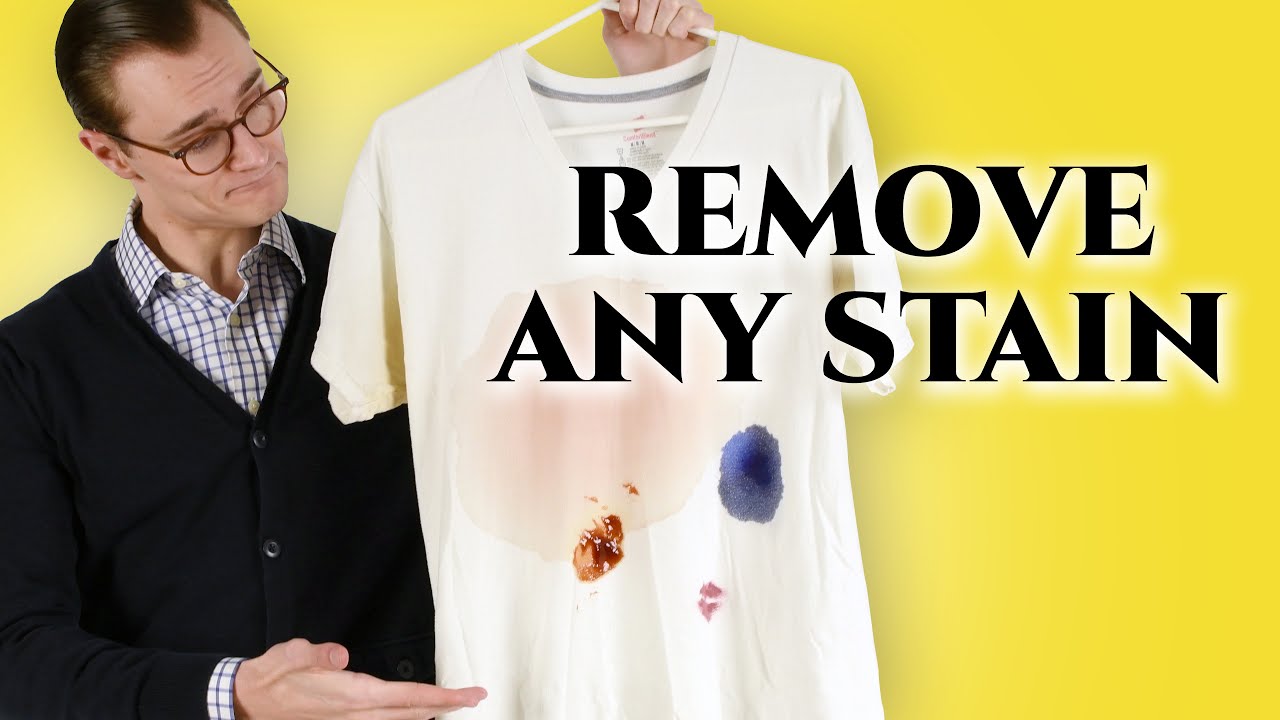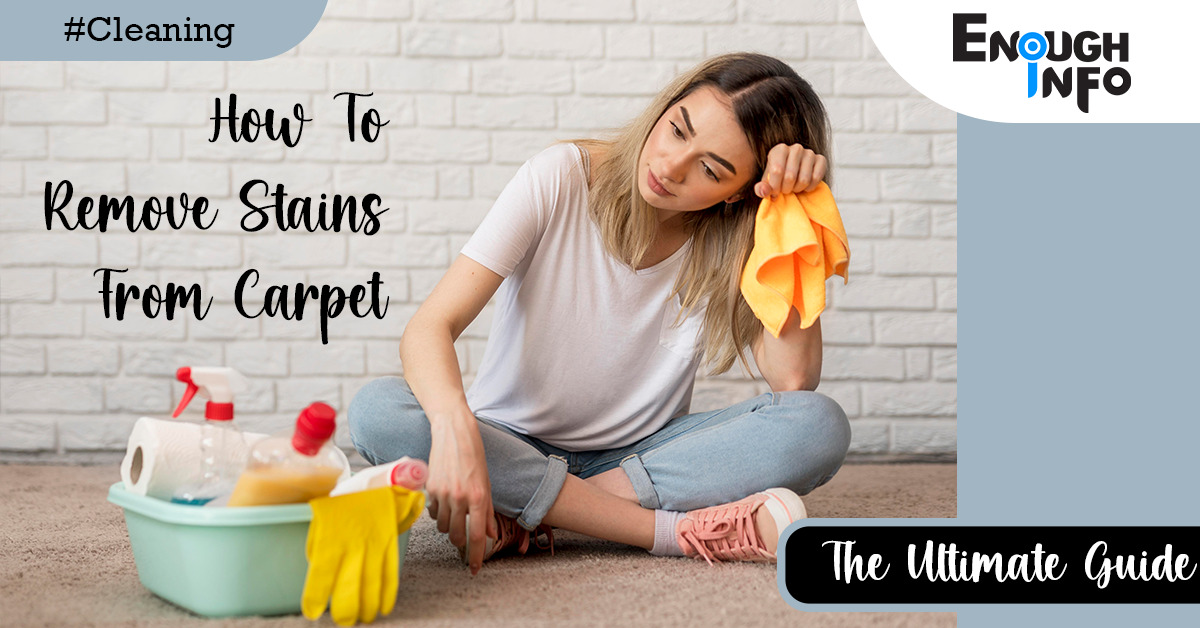How To Remove Stains From Clothes

How to remove stains from clothes – Stains on clothes are an inevitable part of life. Whether it’s a coffee spill, ink smudge, or grease mark, tackling stains promptly and effectively can help restore your garments to their former glory. Don’t groan in frustration just yet, whether it’s your favorite top, or your son’s school uniform. Those seemingly insurmountable stains – red wine, blood, and tea — aren’t so difficult when approached from the appropriate position. We’ve got fantastic ideas and strategies for getting those pesky stains out of your clothes.
It’s crucial to note that not all remedies work every time, so don’t give up if a certain trick doesn’t totally remove a stain. Continue to try; eventually, a strategy will work. Another cardinal rule of stain removal is to never, ever put a garment in a heated dryer until you are very certain the stain has been erased. This will just allow the stain to solidify and become a persistent, annoyance in your life.
Read Also: How To Get Highlighter Out Of Clothes
How to Remove Stains from Clothes: A Comprehensive Guide
In this comprehensive guide, we will walk you through various stain removal techniques and provide tips for common stain types, empowering you to save your favorite clothes from unsightly blemishes.
1. Preparing for Stain Removal:
Before diving into stain removal, consider the following:
- Act Quickly: Treat stains as soon as possible to prevent them from setting into the fabric.
- Read Care Labels: Check the garment’s care label for specific instructions on stain removal and any fabric limitations.
- Test in an Unnoticeable Area: Always test stain removal methods on a small, inconspicuous area of the fabric to ensure it doesn’t cause damage or discoloration.
2. Common Stain Removal Techniques:
- Blotting: For liquid stains, blot the affected area with a clean cloth or paper towel to absorb as much of the stain as possible. Avoid rubbing, as it can push the stain deeper into the fabric.
- Pre-treating: Apply a stain remover or liquid detergent directly to the stain, gently rubbing it in with your fingers or a soft brush. Let it sit for a few minutes to allow the product to penetrate the stain.
- Laundering: Wash the garment according to its care label instructions. Use the appropriate water temperature and select a detergent suitable for the fabric. Inspect the stain after washing, and if it’s still visible, repeat the stain removal process.enoughinfo
Read Also: How to Get Spray Paint off Skin
3. Tips for Common Stains: a. Food and Beverage Stains:
- Coffee/Tea: Blot the stain, then apply a mixture of dish soap and water. Rinse and launder as usual.
- Wine: Blot the excess wine, sprinkle salt on the stain, and rinse with cold water. Launder as directed.
- Grease/Oil: Apply dish soap or a pre-treatment stain remover, let it sit for a few minutes, and wash as usual.
b. Ink Stains:
- Ballpoint Pen Ink: Dab the stain with rubbing alcohol or use an ink remover pen. Launder as instructed.
- Permanent Marker: Apply rubbing alcohol, let it sit, and rinse with water. Repeat if needed, then wash.

c. Sweat Stains:
- Mix equal parts of hydrogen peroxide and water, apply it to the stain, and let it sit for 30 minutes before washing.
d. Blood Stains:
- Rinse the stain with cold water, then soak in a mixture of cold water and enzyme-based detergent. Launder using cold water.

4. Special Considerations:
a. Delicate Fabrics: Use mild stain removal methods suitable for delicate fabrics, such as hand-washing or using specialized stain removers designed for delicate materials.
b. Dry Clean Only Items: Take them to a professional cleaner and inform them about the nature of the stain for appropriate treatment.
c. Set-In Stains: Older or set-in stains may require more intensive treatment. Consult a professional cleaner if all else fails.
Read Also: How To Get Wood Stain Out Of Clothes
FAQs & Answers
Can I use bleach to remove stains from clothes?
Bleach can be effective for removing certain stains, particularly those caused by white or colorfast fabrics. However, it’s essential to use bleach cautiously and according to the garment’s care label instructions. Some fabrics, like silk or wool, can be damaged or discolored by bleach. Additionally, bleach may not be suitable for all types of stains, such as oil or grease. It’s best to explore alternative stain removal methods before resorting to bleach.
How do I remove tough, set-in stains?
Set-in stains can be more challenging to remove, but it’s still worth attempting to treat them. Start by pretreating the stain with a stain remover or liquid detergent and let it sit for an extended period, even overnight if possible. Gently scrub the stain using a soft brush or toothbrush. If the stain persists, consider using specialized stain removal products or consult a professional cleaner for assistance.
Should I use hot or cold water for stain removal?
The water temperature you should use depends on the type of stain and the fabric. In general, it’s best to use cold water for most stain removal efforts, as hot water can set certain stains, particularly protein-based stains like blood or egg. However, for oily or greasy stains, warm or hot water can be more effective at breaking down the oils. Always refer to the care label instructions for the garment and adjust the water temperature accordingly.
What should I do if the stain has already been dried or ironed?
Dried or ironed stains can be more challenging to remove since heat can set the stain further into the fabric. However, you can still attempt stain removal. Start by pretreating the stain with a stain remover or liquid detergent and let it sit for a longer period to allow the product to penetrate the fibers. Gently scrub the stain, and if it shows improvement, proceed with laundering. If the stain remains after washing, you may need to consult a professional cleaner for specialized treatment.
Read Also: How to remove paint from clothes (2023 Review)
Are there any natural or homemade stain removal remedies?
Yes, several natural or homemade remedies can be effective for removing stains. For example, a paste made from baking soda and water can help lift stains, especially for items like coffee or tea. Lemon juice or white vinegar can also be used to tackle stains. However, it’s important to note that these remedies may not work on all types of stains or fabrics, and they should be tested in an inconspicuous area before applying them to the stained area.
Can I use a stain remover spray for all types of stains?
Stain remover sprays can be effective for a wide range of stains, but it’s crucial to choose the right product for the specific type of stain you’re dealing with. Different stain removers are formulated to target specific types of stains, such as grease, ink, or wine. Read the label carefully to ensure the product is suitable for your particular stain, and always follow the instructions provided by the manufacturer.
Are there any preventive measures I can take to avoid stains on my clothes?
Absolutely! Taking preventive measures can help minimize the occurrence of stains. For example, wearing aprons while cooking or eating can protect your clothes from food and oil stains. Treating stains promptly, avoiding rubbing or scrubbing, and being mindful of the fabrics you’re wearing can also help prevent stains from setting in. Additionally, using stain-resistant products or sprays on certain garments before wearing them can provide an extra layer of protection against stains.
Read Also: How To Look Fresh (The Ultimate Guide)
Conclusion:
With the right techniques and a proactive approach, you can successfully remove stains from your clothes and extend their lifespan. Remember to act swiftly, test methods in inconspicuous areas, and follow the fabric care instructions. By mastering stain removal techniques, you’ll be able to maintain the appearance of your garments and confidently handle any accidental spills or blemishes that come your way.How to remove stains from clothes




